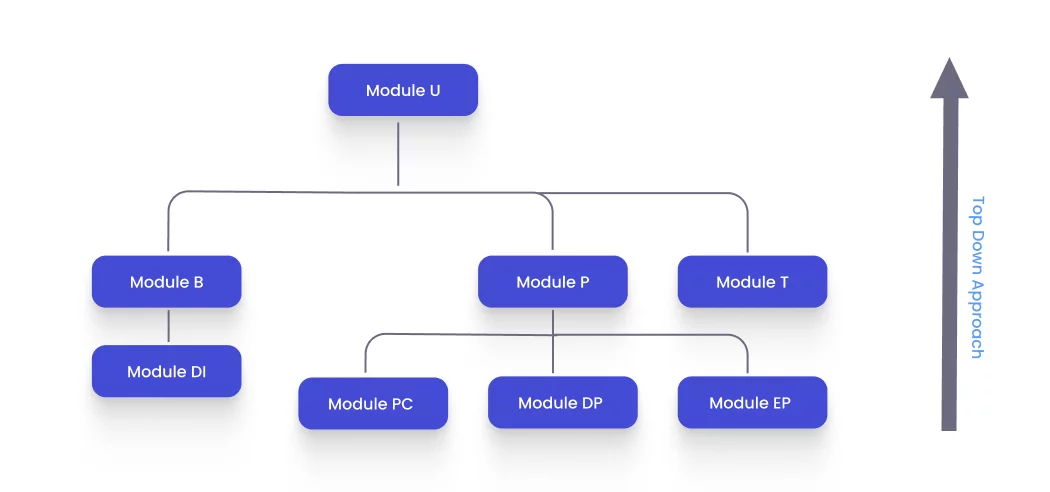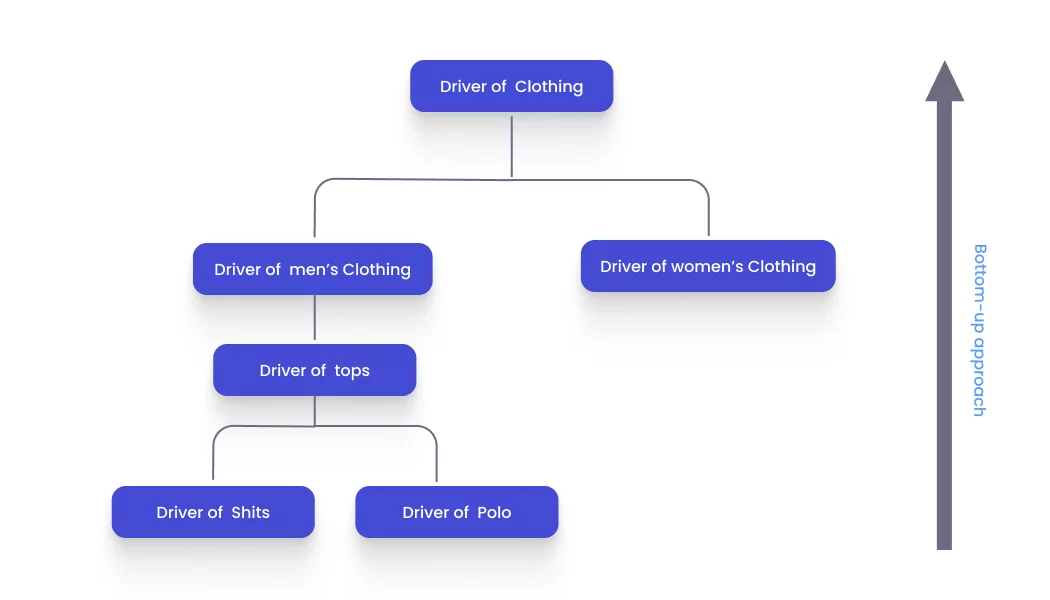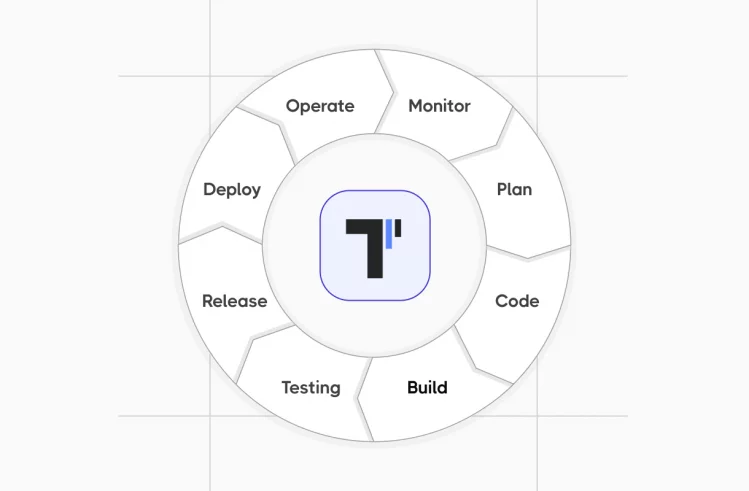Modern QA processes include different types of testing, which can be classified as functional testing and non-functional, automated and manual testing, and lower and higher-level tests. Each has other testing objectives, duration, requirements for necessary resources, etc.
More to this subject:
So, among variety of software testing types, we have chosen two types of tests that are often opposed to each other – integration and E2E – and decided to understand their differences.
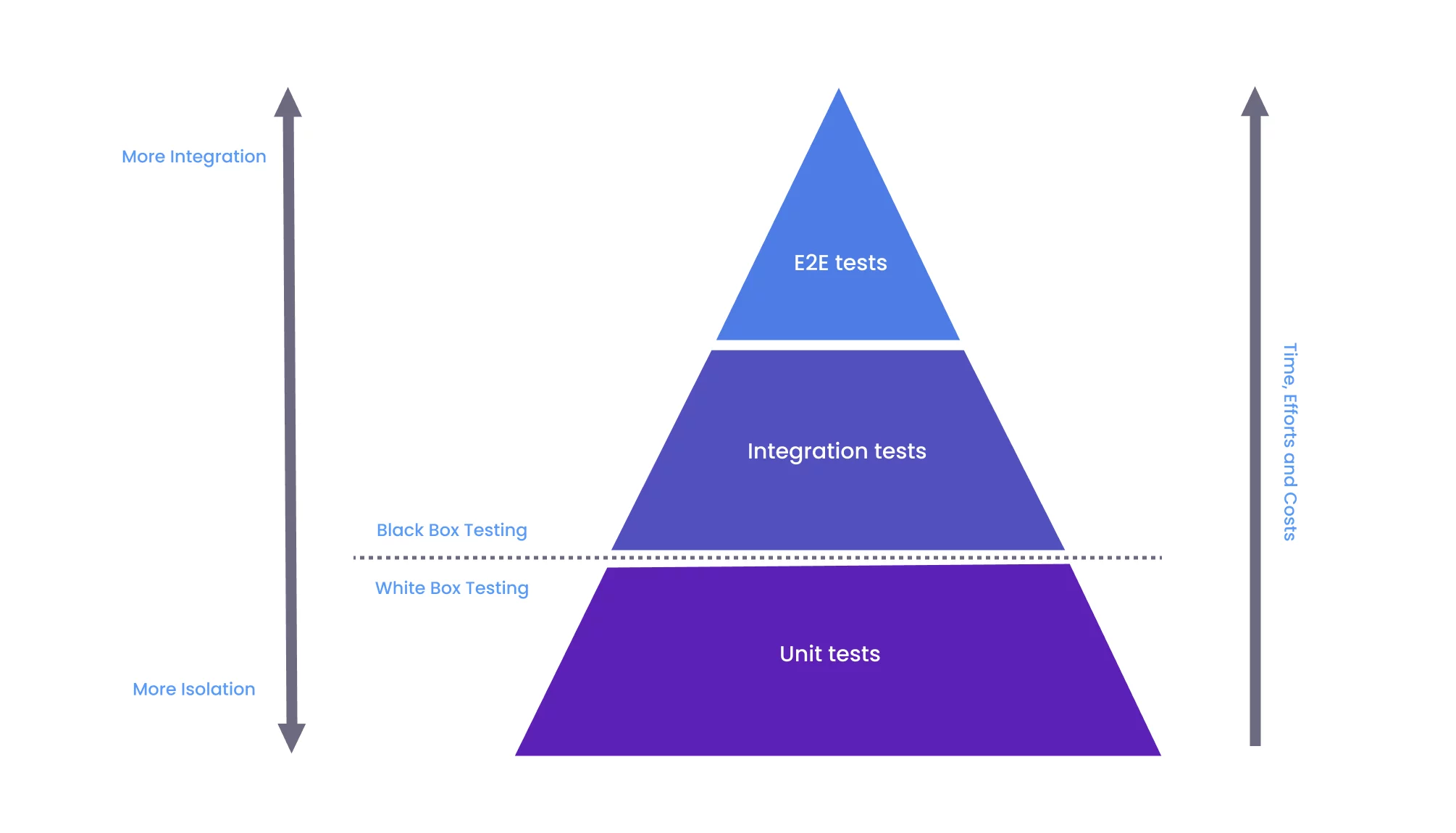
Let’s continue to consider Integration and End-To-End Testing using visualized context.
Everything You Need to Know About Integration Testing
Every software product is like a puzzle; its elements are individual modules created by different developers. While unit tests allow you to check the particular functionality of each of these app components, integration testing ensures that multiple components interact correctly, as expected.
The main objective of integration tests is to verify the quality of interaction between different system components and gradually bring them together into a comprehensive system by integrating smaller modules.
Integration testing is indispensable in developing complex systems consisting of multiple components. While they may perform effectively in isolation, integrating them into a unified whole may reveal that the entire software is malfunctioning before production.
Approaches to conducting integration testing
Each QA team can choose a technical approach to conducting integration testing that best suits the specific needs of the project. There are several such approaches, but two of the most common ones are the big bang approach and the incremental approach.
In the first case, integration testing begins with integrating all app components into a unified whole, after which the entire system is tested.
The second approach involves combining logically related modules, testing each group, and only then integrating different components into a unified system.
It is worth noting that the incremental approach also includes several subtypes. Let’s consider each of them.
- Top-down approach. It involves testing higher-level modules before lower-level modules. If any lower-level modules are not yet developed, placeholders are used for their interfaces.
Scheme of Top-down approach (example) - Bottom-up approach. This approach involves the opposite scheme of working on software quality assurance. This approach tests software units in reverse order: first lower-level modules, then higher-level modules. This approach has its advantage. It allows for ensuring the reliability of smaller modules before starting the testing of more complex modules.
Scheme of Bottom-up approach
As with the top-down approach, continuous software product testing is possible even if some of its components are not yet ready. In this case, drivers are used to replace the missing modules.
Advantages and disadvantages of integration tests
Integration testing, often termed as an integration test, is an essential stage of software development that no major project can do without. However, this testing type has not only positive aspects. Let’s talk about the benefits that integration testing can bring your team and the challenges testers face when performing this type of testing. This exploration will help us understand how the integration test can be both a hurdle and a stepping stone in creating robust software.
Advantages of integration testing: why should it be conducted?
- The ability to detect bugs at the early stages of development reduces the cost of fixing them and decreases the time spent on them.
- Better test coverage by using higher-level tests compared to component testing.
- Improve software’s performance and functionality by ensuring all app components work without errors after integration and the application meets specific requirements.
- Providing a reliable foundation for end-to-end testing. Integration testing occupies an intermediate position between unit and e2e testing and helps make the latter more efficient.
Disadvantages of this testing method
- Testing critical modules in the order of the general queue if you use the big bang approach, where all existing modules are tested simultaneously. This makes it impossible to test the components that are most prone to failure first.
- The complexity of organizing testing when multiple components, such as platforms or databases, are involved in the process.
- The need for additional efforts to create placeholders and drivers required to run tests at the early stages of development when not all modules are ready.
- The need for significant time and resources to ensure the quality of all interactions between various modules.
End-to-End Testing: Why Is It Important?
End-to-End Testing is a type of testing that involves a comprehensive evaluation of a software product. During e2e testing, a user’s interaction is simulated in real-world scenarios, and the quality of system integration with third-party software is tested.
Unlike integration testing, E2E testing does not break down the software into modules but tests it from start to finish. This approach allows us to examine the application’s performance in a real, not a development environment and identify issues before the software reaches end users.
Like integration testing, there are horizontal and vertical approaches to performing end-to-end tests.
- Horizontal E2E testing is performed from the end user’s perspective and focuses on checking all possible usage scenarios. Attention is given to all aspects of the software product, including UI, database layers, and the logic of the digital solution. For example, in the case of an e-commerce app, horizontal E2E testing can verify the process of purchasing a product, from selecting items to completing the delivery. This includes testing user authentication or inputting user data into an order form, adding items to the shopping cart, processing payment, and confirming the order.
- Vertical E2E testing is a more technical approach that involves testing individual subsystems and layers of the digital product from top to bottom. This approach in e2e testing is suitable for verifying the functionality of complex systems that do not rely on databases and APIs.
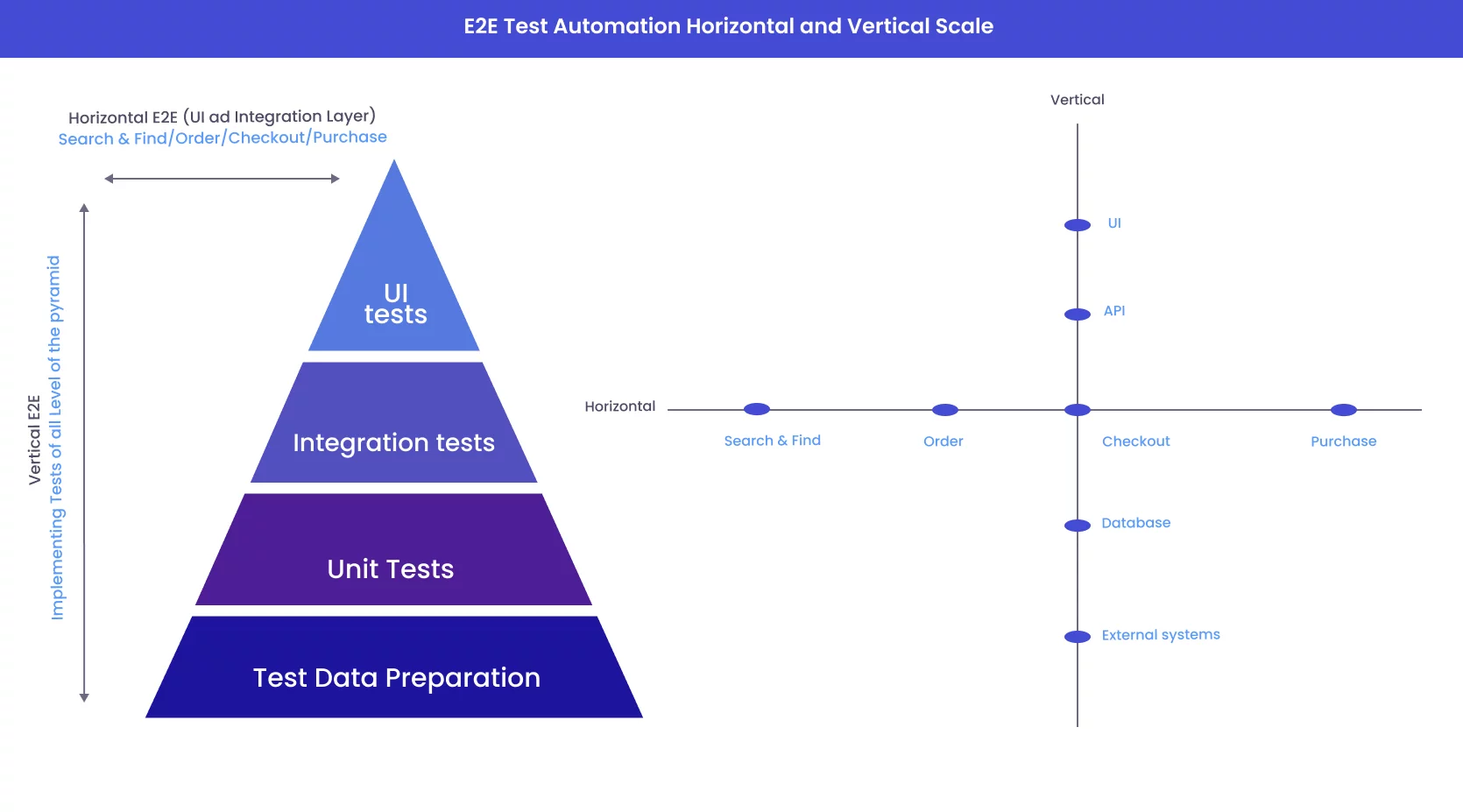
Advantages and disadvantages of end-to-end testing
When comparing E2E tests to integration and especially unit tests, it is clear that end-to-end testing operates at a significantly higher level. It allows for checking the overall quality of the application, providing a complete picture of its functioning in conditions close to real-world usage. However, the scale of this software testing type comes with certain challenges that you need to consider before starting the QA process.
Advantages of end-to-end testing for your team
- Maximum test coverage compared to other testing types. With E2E tests, you can verify the application’s functionality, including its interface and API, and the quality of third-party integrations and database interactions, etc.
- Cross-browser testing. Effective end-to-end testing ensures your digital solution works equally well across browsers, demonstrating compatibility with any device and platform.
- Ability to identify bugs before software release. End-to-end testing is conducted at the final stage of software development before the product is presented to the public. This allows for timely error correction, increasing user satisfaction, and keeping the project budget on track.
- Reduction in testing efforts. Quality E2E tests guarantee that the digital solution will function properly, eliminating the need for repetitive test runs.
Disadvantages of E2E testing: what to be prepared for?
- A lot of time writing test cases to check all possible variants of user’s interaction. This is particularly time-consuming for testing software products with complicated architectures. This challenge can be addressed by using specialized tools for test automation.
- Complexity in setting up the testing environment. Simulating a production environment may require many software and hardware components. Cloud testing platforms can facilitate this process in end-to-end tests by providing access to diverse software testing environments.
- Slow execution speed, especially for test cases focusing on testing application functionality through its UI.
- Challenges in pinpointing the problem in case of a failed test. This is due to the comprehensive nature of E2E testing, which may require more tests to identify a bug than detailed unit testing.
End-To-End Testing vs. Integration Testing: Comparison
We have compiled a comparison table of these testing types to make understanding the differences between integration and end-to-end testing easier.
| Integration testing | E2E testing | |
| Testing objectives | Checking the integration between various modules of a software product. | Testing the functionality of apps in conditions close to real-world scenarios, as well as the quality of integration with external applications and services. |
| Test coverage | Covers the interaction between system components. | End-to-end tests applies to the entire software, including its interface, API, and database layers. Tests the user flow from start to finish. |
| Budget | Requires additional resources to create placeholders and drivers, which can be costly when testing complex systems with many modules. | A more resource-intensive testing type, compared to integration testing, as it requires investment in setting up the testing environment, personnel, and equipment. |
| SDLC Stage | It can be conducted in the early stages of the software development lifecycle to detect bugs early. It is usually performed after unit testing and is a foundation for E2E testing. Running integration tests is possible even if not all modules are ready. | Performed at the end of the SDLC, before the software release. It can only be done once the entire software codebase has been written. |
| Strategies used, types of tests | Integration test utilize white-box strategy and API testing. | Utilizes the black-box testing strategy and is often accompanied by user acceptance testing (UAT). |
| Speed of execution | Compared to E2E tests, integration tests are faster to execute. | End-to-end tests are executed slowly. |
Bottom Line
Integration and End-to-End testing are two high-level testing types that assess the functionality of a system. The main difference between them is that E2E tests focus on checking the entire software and posibility user-end interaction with it, while one of the primary integration testing objectives is to verify the quality of interaction between software components.
Implementing both strategies can be costly, especially when testing software with complex architecture. To simplify the work for testers, it is recommended to use specialized tools for test automation.
Test management system testomat.io is a modern tool that allows you in organizing both testing types:
- Import ready-made automated and manual test cases or create new ones in a few clicks.
- Organize tests efficiently with @tag, label systems, searching, filtering them
- Execute tests directly from test management system, including through CI\CD pipelines.
- Track test run history
- Track testing results through detailed reports and deep analytics.
- Report discovered bugs to developers through seamless integration with Jira.
- …and many more, to know in detail visit feature list page
When choosing between E2E vs. integration testing, consider the specific needs of your project and team, as these testing types have completely different goals. Also, use a reliable testing tool to obtain objective results, save time, and stay within the company’s budget.

